D2L Fusion Conference Notes 2025
D2L +, and then some

Was this forwarded to you by a friend? Sign up, and get your own copy of the news that matters sent to your inbox every week. Sign up for the On EdTech newsletter. Interested in additional analysis? Try with our 30-day free trial and Upgrade to the On EdTech+ newsletter.
Last week, I attended the D2L Fusion user conference in person for the first time since 2019. My absence in recent years was partly due to Covid and partly because Phil and I have needed to trade off attending user conferences, especially when they conflict, as Instructure’s and D2L’s did this year.
The D2L that hosted this year’s conference felt like a very different company from the one I saw in 2019: more confident, with a stronger vision for what the Brightspace LMS can be and a clearer commitment to grounding that vision in learning science.
D2L rolled out a wide range of new features at the conference. Some were small tweaks or long-requested functions, such as the ability to print quizzes. Most, however, were major additions to Brightspace’s capabilities, built on a philosophy of meeting instructors where they are and enabling a more engaging or more efficient experience, an approach informed by extensive user research. Some tools were developed in-house, while others came through new partnerships with third-party companies. This expanded emphasis on partnerships was highlighted by multiple D2L executives as a sign of the company’s growing maturity.
The overall feel of the conference was one of quiet, understated confidence and contentment. There wasn’t much applause from clients during announcements, which initially made me wonder how they were receiving the news, particularly for the larger feature releases. As I followed up with client after client, however, it became clear that the subdued response wasn’t due to being underwhelmed, skeptical about the features, or feeling they were the wrong ones. Rather, D2L’s clients seem quietly satisfied, mirroring the same very real but low-key confidence shown by the company’s leadership.
So, what tools did they announce, and what do these announcements mean for D2L and the LMS?

D2L leadership arriving at the conference with their new product announcements; or the view from my hotel window
D2L Product Announcements
Expanding Gen AI options
Until now, D2L has taken a relatively cautious approach to AI integration. Its AI toolset, Lumi, has offered some functionality, but not nearly as aggressive or comprehensive an approach as, for example, Anthology and its Blackboard LMS. This year, however, D2L unveiled an extensive new set of AI-powered tools, most of which will be available soon—many offered through a new partnership with LearnWise.
Lumi Chat – Provides embedded support within D2L based on course content, with the ability to incorporate additional institutional resources such as help desk tickets or CRM data. By integrating resources beyond the LMS, the goal is to create a single source of truth for students seeking information.
Lumi Tutor – Offers AI-generated support in the form of chat, quizzes, flashcards, and study plans tailored to course material.
Lumi Feedback – Assists instructors by automating the creation of rubrics and aspects of grading.
Lumi Insights – Gives instructors deeper visibility into student performance, helping identify where students are struggling and highlighting what is (and isn’t) working—such as problematic quiz questions.
Lumi Study Support – Provides learners with customized feedback and study recommendations based on their quiz performance.
The Lumi modules are available separately as add-ons, with additional costs for institutions that choose to integrate information from systems outside the LMS.
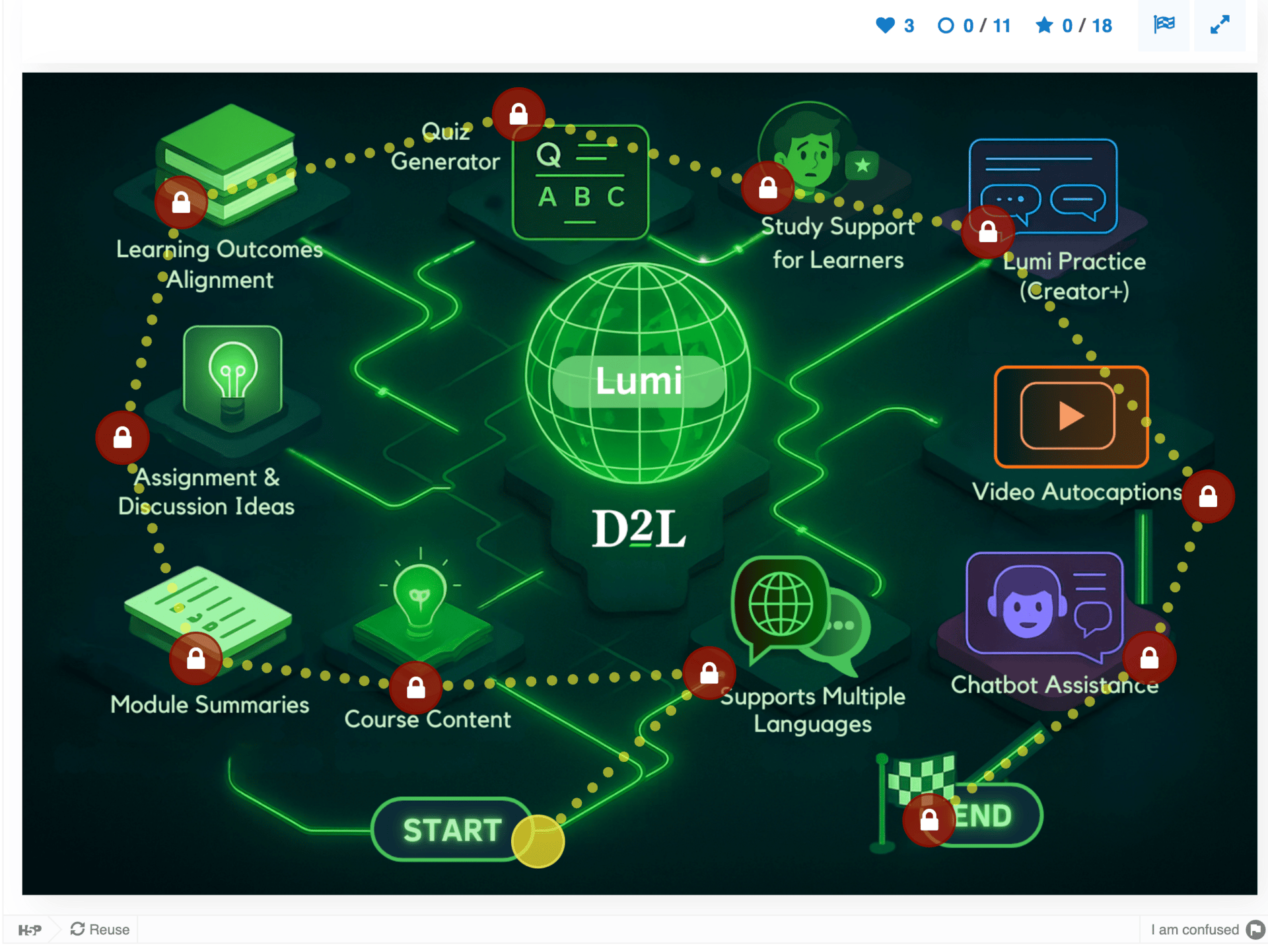
The new Lumi features signal a notable shift in D2L’s approach to AI. Rather than chasing flashy AI products, D2L positions the LMS as a low-risk, high-reward environment in which institutions can explore AI tools that can often feel daunting. By embedding AI into the everyday activities of students and instructors, rather than forcing entirely new workflows, D2L is betting on adoption through familiarity (keep this in mind for Phil’s upcoming post on InstructureCon). It’s a quieter strategy than its primary competitors, but potentially a more sustainable one.
Doubling down on content
For some time now, D2L has emphasized the importance of creating engaging, high-quality content while maintaining ease of use. In previous years, this focus was evident in the rollout of Creator+. This year, D2L has expanded that emphasis with several new tools and features.
As part of the Core product, D2L introduced Createspace, which they described as the future of authoring and sharing. The first components are available now. Rather than creating content directly within a course, instructors can now create, version, reuse, template, and share content in a separate tool.
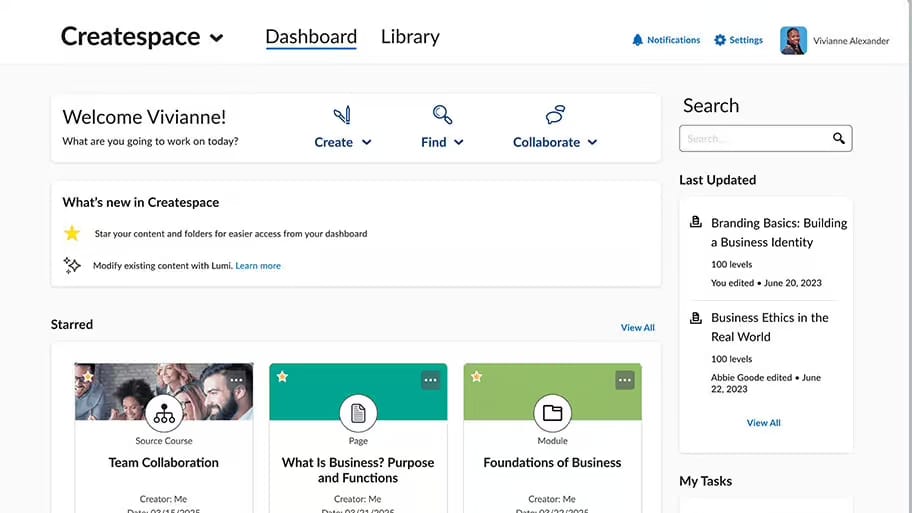
This capability will likely be a real advantage for large clients, especially in courses with multiple sections or in fully online programs where content is developed centrally. It remains to be seen, however, how much adoption it will see outside these use cases. We still don’t have a clear enough understanding of individual instructor workflows to know whether the will adopt this model of working.
D2L also addressed content accessibility with Accessibility+. This tool can automatically remediate accessibility issues in documents such as PDFs. For issues not resolved through automated processes, users will have the option to request help from a human—either at their own institution or through a new partnership with Ansrsource.
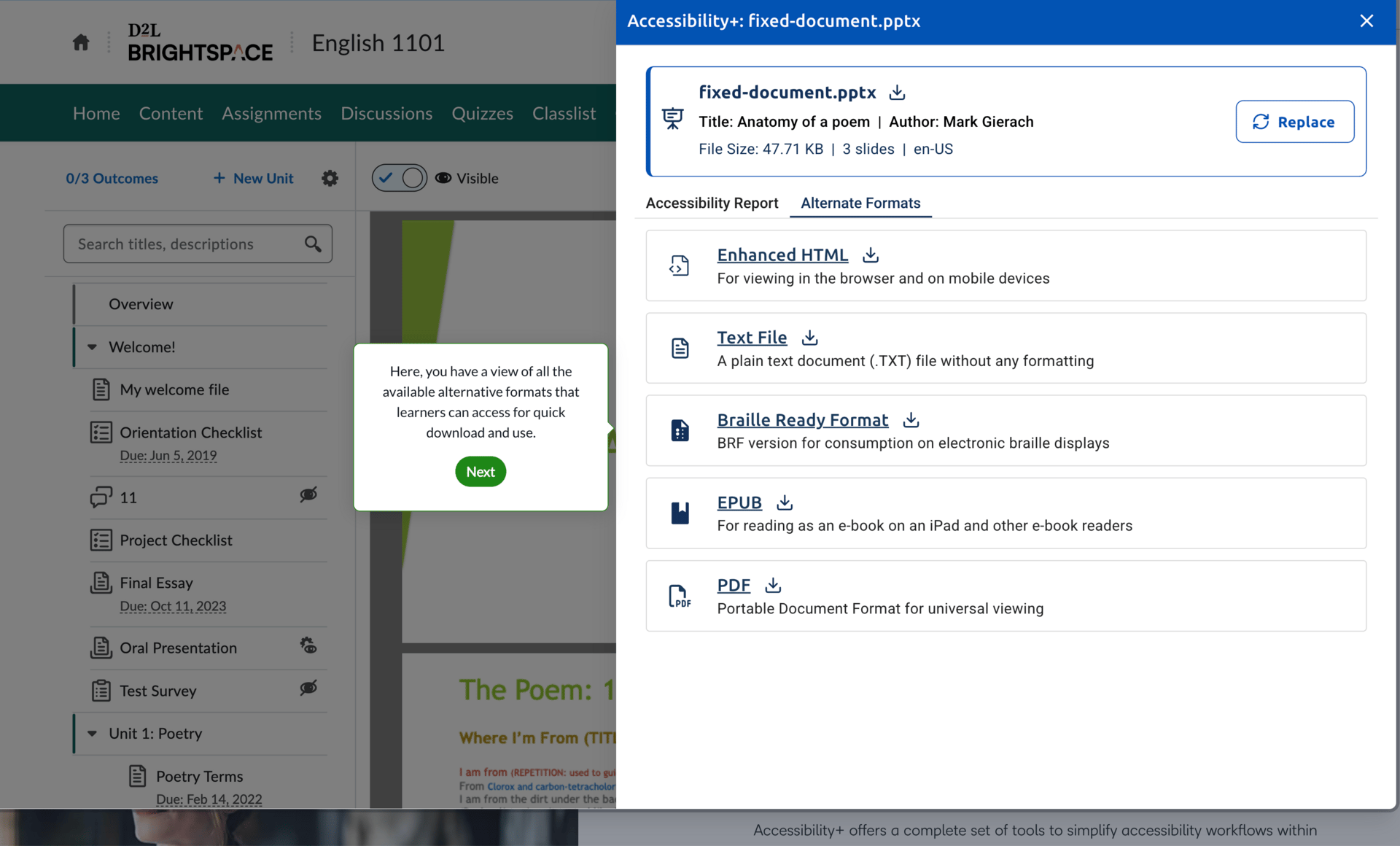
At last year’s Fusion, D2L announced the acquisition of interactive content provider H5P. In the intervening year, they have integrated H5P across multiple parts of the Brightspace content experience, making it easier to create more engaging, interactive materials. H5P interactives will now be available in Lumi Chat, quizzes, and other areas of the platform.
A stronger focus on the corporate market
Finally, D2L is placing a much stronger emphasis on the corporate market than in the past. The company now has over 480 corporate clients, and this shift was evident in both the attendance and the programming at the conference. From the announcements and presentations, much of this corporate focus appears to center on the association and non-profit space with, for example, the recent addition of the Project Management Institute, with its 750,000 members, as a client.
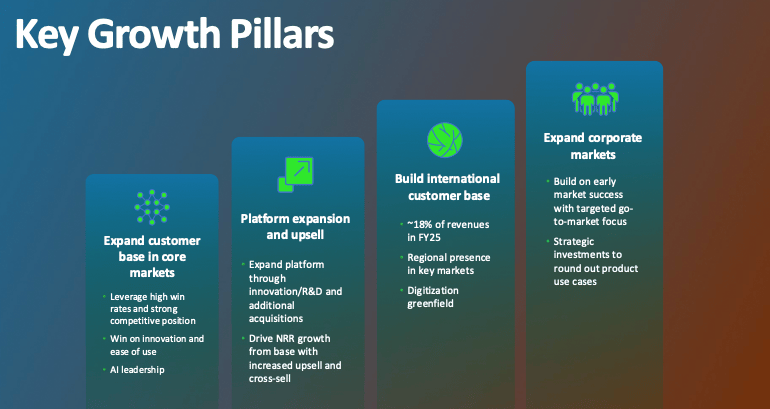
This increased corporate focus has largely come at the expense of K-12, which was seldom discussed and had minimal representation in the program. The K-12 market is certainly a challenging one, particularly outside of the largest districts. It is also a space being increasingly and aggressively targeted by Google. D2L’s reduced emphasis on this market likely reflects both of these realities, but it does represent a potential risk.
Another noticeable gap in many presentations and market discussions was the concept of transitions between sectors. In D2L’s positioning, K-12, higher education, and the corporate market tended to be treated as distinct, separate markets for the LMS. While it’s easy to see why this happens, I’m not convinced it is the best approach. However complex it may be, there is a real need to better understand, and actively smooth, the flow of learners as they move from one phase to another.
Putting it all together
Long-time readers of On EdTech might be wondering—given all this positive coverage of the conference, who exactly is writing this post and what have you done with Morgan? No worries, I still have questions about both D2L’s approach and the future of the LMS.
Product Messaging - Overall, D2L is doing a much better job at messaging, which is a change from the past. Maybe I have too soft a spot for an Irish brogue, but I find Chief Marketing Officer Brian Finnegan to have brought an open, clear, and transparent approach to their messaging. With one exception
When it comes to Lumi, I found the naming and product descriptions far more confusing than they need to be. I saw different names on different slides along with slightly inconsistent messaging from LearnWise. While the approach itself is welcome, this site on the product roadmap wasn’t particularly helpful in clarifying the naming. Given that parts of Lumi will be available separately, D2L should make a concerted effort to clearly name and differentiate each component.
Up-sells - Most of the new features, especially those within Lumi, will carry additional charges, often around a third of the base price. I’m sympathetic to D2L (and other LMS vendors) on the need for this approach. LMS per-user costs are lower now than when I first started doing contract reviews at scale in 2015 despite the increased importance of the LMS.
That said, I’ve reviewed hundreds of LMS contracts, and I know how cranky institutions can get about paying extra. It can quickly start to feel like nickel-and-diming. Charging for additional features is risky for vendors, but they also need a sustainable business model. It must be frustrating for them to watch institutions pay far more in subscription fees for other tools that are arguably less central to teaching and learning.
Perhaps the up-sell model will become more widely accepted. Perhaps vendors will succeed in monetizing partner relationships through revenue-sharing. But overall I think the better long-term solution for the market is to re-frame the LMS as a core piece of infrastructure, one that can command a fairer and more sustainable price.
Timelines - One source of frustration for me was that, in contrast to the clarity of most product announcements, D2L’s handling of many specific feature timelines was frustratingly vague. Too often on stage, there was no indication of whether a product was available now, in beta, or “coming soon” (and what exactly does “soon” mean?). Yes, you could cross-reference with the roadmap page and figure some things out, but clearer messaging during the presentations, with timelines on the slides, would have been better.
Meeting Users Where They Are vs. Transformation - I commend D2L’s focus on researching and understanding users, and on building enhancements directly into existing workflows. But there’s an inherent tension here: following users too closely can limit innovation. Henry Ford supposedly said that if he had asked his customers what they wanted, they would have said a faster horse. Clay Shirky captured a similar point at the Executive Summit when he said that institutions could have their goals or their practices, but not both.
He was speaking about higher education’s larger challenges—the impact of AI, shifting perceptions of higher education, and the changing world of work. But I think the same principle applies to systems like the LMS. If we want improved teaching and learning, we may need to let go of some of our traditional practices. Letting users dictate workflows too closely is a risk that D2L will have to confront.
Things Not Said - Two issues were notably underrepresented at the conference, at least from the main stages: continuing education/microcredentials and student success. Admittedly, these are areas I cover closely, but I think their omission is significant. Both are critical to higher education right now, and both present challenges as well as opportunities.
Continuing education is especially noteworthy because D2L is gaining traction with some interesting clients in this space, such as the Lastinger Center at the University of Florida, Babson College’s non-degree programs, and several other institutions currently “kicking the tires.”
Parting Thoughts
I’ll cut them some slack on the last point, as there were plenty of other interesting features and ideas to explore. In some ways, the substantive content of the conference felt a bit like the conference party itself. One attendee described it as a source of continual surprises; around every corner there was something new and appealing, whether it was burnt ends, excellent ice cream, or some rather nice bourbon.
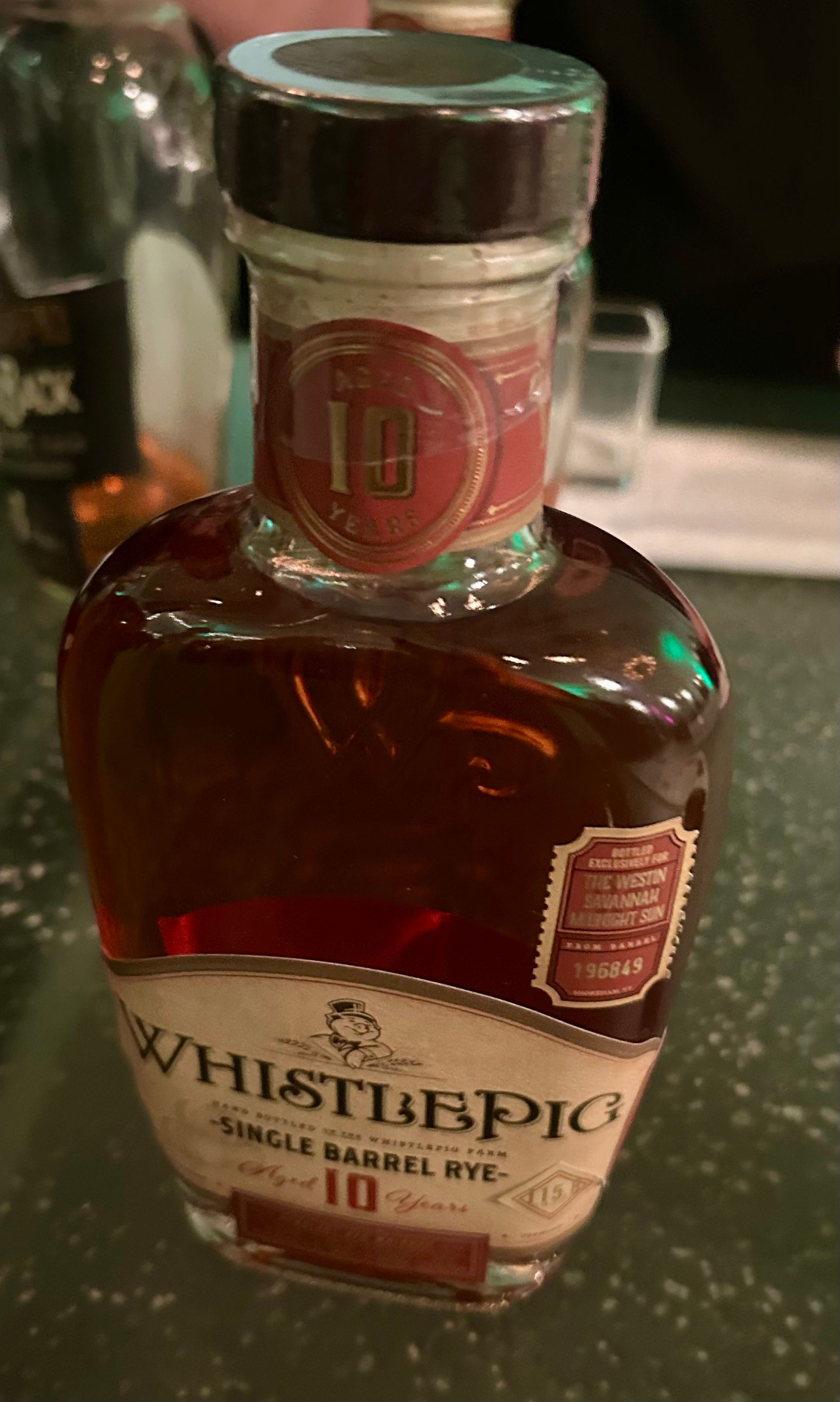
The premium On EdTech+ newsletter is intended for a single recipient with occasional forwarding allowed.